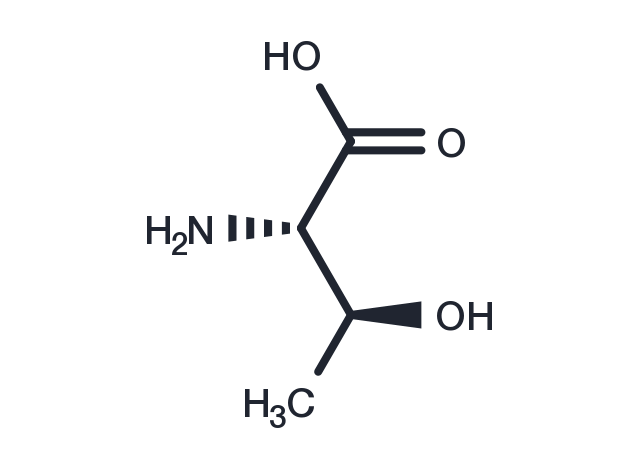Powder: -20°C for 3 years | In solvent: -80°C for 1 year


L-Allothreonine (L-allo-Threonine) is an essential amino acid in humans. L-Allothreonine is abundant in human plasma, particularly in newborns. Severe deficiency of threonine causes neurological dysfunction and lameness in experimental animals. L-Allothreonine is an immunostimulant which promotes the growth of thymus gland. L-Allothreonine also can probably promote cell immune defense function. L-Allothreonine is highly concentrated in meat products, cottage cheese, and wheat germ.

| Pack Size | Availability | Price/USD | Quantity |
|---|---|---|---|
| 500 mg | In stock | $ 29.00 |


| Description | L-Allothreonine (L-allo-Threonine) is an essential amino acid in humans. L-Allothreonine is abundant in human plasma, particularly in newborns. Severe deficiency of threonine causes neurological dysfunction and lameness in experimental animals. L-Allothreonine is an immunostimulant which promotes the growth of thymus gland. L-Allothreonine also can probably promote cell immune defense function. L-Allothreonine is highly concentrated in meat products, cottage cheese, and wheat germ. |
| In vivo | The impact of applied intra-articular HA has been proven in many studies in animals. Studies on HA have shown that it promotes the synthesis of cartilage matrix, prevents its degradation, reduces inflammation, stimulates the synthesis of endogenous HA, and improves the resilience and moisture of cartilage. High molecular size HA preparations, applied topically, promote healing of fresh skin wounds. They also promote the healing of venous leg ulcers and are useful in the management of chronic wounds. |
| Synonyms | L-allo-Threonine |
| Molecular Weight | 119.12 |
| Formula | C4H9NO3 |
| CAS No. | 28954-12-3 |
Powder: -20°C for 3 years | In solvent: -80°C for 1 year
DMSO: Slightly soluble
You can also refer to dose conversion for different animals. More
bottom
Please see Inhibitor Handling Instructions for more frequently ask questions. Topics include: how to prepare stock solutions, how to store products, and cautions on cell-based assays & animal experiments, etc.
L-Allothreonine 28954-12-3 Metabolism Others Endogenous Metabolite inhibit Inhibitor L Allothreonine LAllothreonine L-allo-Threonine inhibitor
